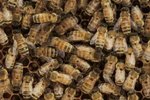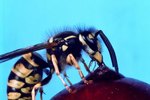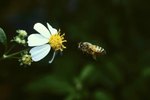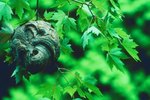
For anyone who has been stung by a yellow jacket, it is a painful experience best avoided. However, yellow jackets can be beneficial to humans as they feed on insects that can ruin our domesticated plants. So, while it's best they don't nest near or in our homes, learning techniques to relocate their nests can be helpful to coexisting happily with them.
The Organized Yellow Jacket
Living throughout most of North America, yellow jackets can tolerate a wide range of environments and climates through winter hibernation. They have a well developed hierarchy system with one queen and several sterile worker offspring responsible for building a nest each season. This queen can control the sex and sterility of offspring, producing sterile males and females for work, fertile females as future queens and lastly, males strictly for reproductive purposes.
The Yellow Jacket Sting
The yellow jacket stings to protect the nest but nevertheless, have a painful sting. Unlike some other species, they are able to sting repeatedly and their venom can be devastating to those who are allergic. Because they are quite aggressive, attempting to remove a nest can prove a dangerous and complex task.
The Yellow Jacket Nest
Yellow jackets build their nests from chewed wood fiber and saliva and situate them in protected spaces such as trees, shrubs, awnings, attics or other man-made environments. By doing this, they are able to maintain a temperature controlled, safe environment for offspring and are protective of it.
Yellow Jacket Management
The first line of defense against yellow jacket stings is prevention and avoidance however, when they have invaded our space, rather than eliminate them (as they are very effective in pest control), it is best to dissuade them by removing any exposed attractants (i.e. fruit, juices, or soda). If they are still bothersome, a professional can help to remove and relocate the nest. A professional exterminator can provide advice on setting yellow jacket traps including lure or water traps. Due to the great risk of getting stung, professional advice is highly recommended before attempting entrapment.
References
Photo Credits
-
Medioimages/Photodisc/Photodisc/Getty Images
Writer Bio
Working with both small animals and exotics, Pamela Meadors has devoted more than 15 years to the veterinary field. She possesses a bachelor's degree in biological sciences and is the proud mom of a blind hedgehog.




